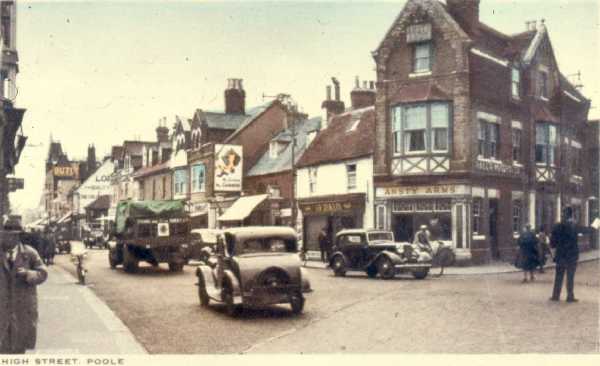POINT DUTY / TRAFFIC CONTROL
Controlling and directing traffic is more than likely a job every policeman has done at one time in their career.
These days its unlikely a police person is going to stand out in the cold for more than an hour awaiting a car to be uplifted or guarding a crime scene, but before the advent of traffic lights a Constable was often stood directing traffic for several hours before being replaced.
Every town in Dorset had its main road junctions which needed the help of someone to try and stop accidents and control the vehicle chaos and I have been collecting some postcards and photographs to show what an exciting experience it usually was not !
None of the photographs/postcards have dates on either, with one exception.

This first postcard above is at the junction of Cornhill and the High Street at Dorchester, which was known as the “Town Cross” and you can date this particular photograph between the summer of 1907 and 1912 as the Constable is wearing a grey summer uniform. This officer looks very impressive height wise at a time that hat makers were working flat out and made lots of money. I cannot see anyone who is not wearing some sort of head gear. It must have been a quite day as there is a queue to talk to the Constable !

You can see the Constable on the left of the above postcard and it must be later than 1912 as still appears to be a summer photograph and after the grey uniforms.
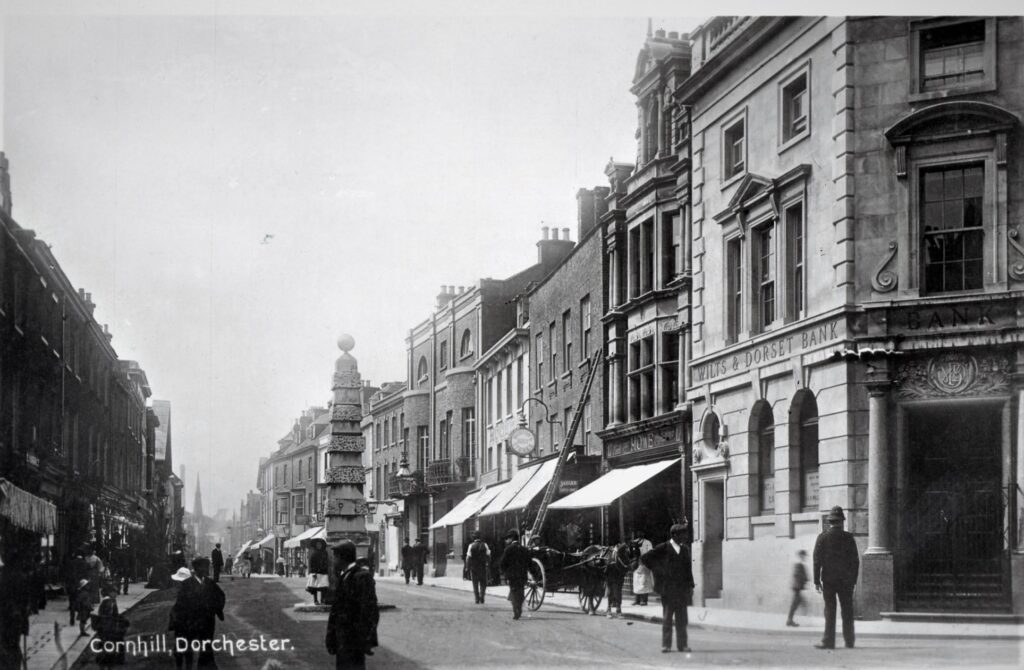
A very similar photograph to the last one except the Constable seems to be busier concentrating on the traffic and probably also before WW1.
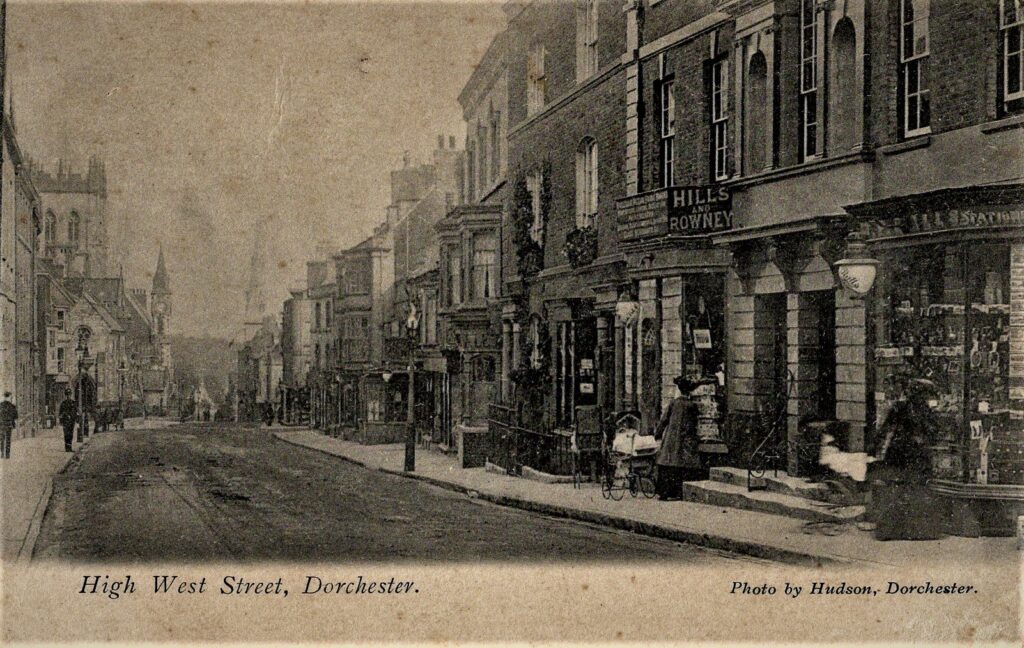
Not sure of when the above photo postcard was created as it may be earlier than the others, but you can just see the Constable standing of the left of High Street West , higher up than Cornhill so he may not be on point duty. Of main interest to me is the street surface as obviously still a dirt surface. Later on when it was cobbled, passing horses would hooves would make a hell of a racket so to keep the noise down on Assizes days that was spread straw everywhere.

The above photograph is probably taken in the 1920’s although it’s a bit of a guess from everyone dress. When my grandfather Vic joined in Oct 1923 after he had completed his basic training he was posted to Dorchester and this is what he said.
“Some policeman’s duties were very irksome as there was a great deal of static work to be done during the day. We were engaged six days a week in doing point duty, which really means in anyone’s language “traffic control”. Whilst being stationed at Dorchester Borough, policemen were engaged without rest bite from 10 am until 8pm in three different shifts. Summer or winter it was an endless routine, it really was more like a punishment duty and the Sergeants knew the intimate likes and dislikes of each man. We used to dread the command of “ Pick up the town cross”, which meant that in effect one would bear his cross for the next 4 or 5 hours in traffic control. In winter time , in wind, rain and snow there was the solitary figure of the policeman faithfully carrying out this onerous task. The badly cut overcoat and tunic buttoned tightly around the neck, would cut into the armpits by the constant hand manipulation of his traffic signs. In extreme cold weather your arms became numb and your feet were like blocks of ice. The only rest bite we had was in the evenings after 8 pm when we allowed to leave the junction and patrol down South Street as far as Durngate Street , never too far away though in case of any emergency.”
He also told me that it was never possible to leave your point for a toilet break otherwise you would be in big trouble with your Sgt so you had to be very organised and considerate before stepping out in the road.
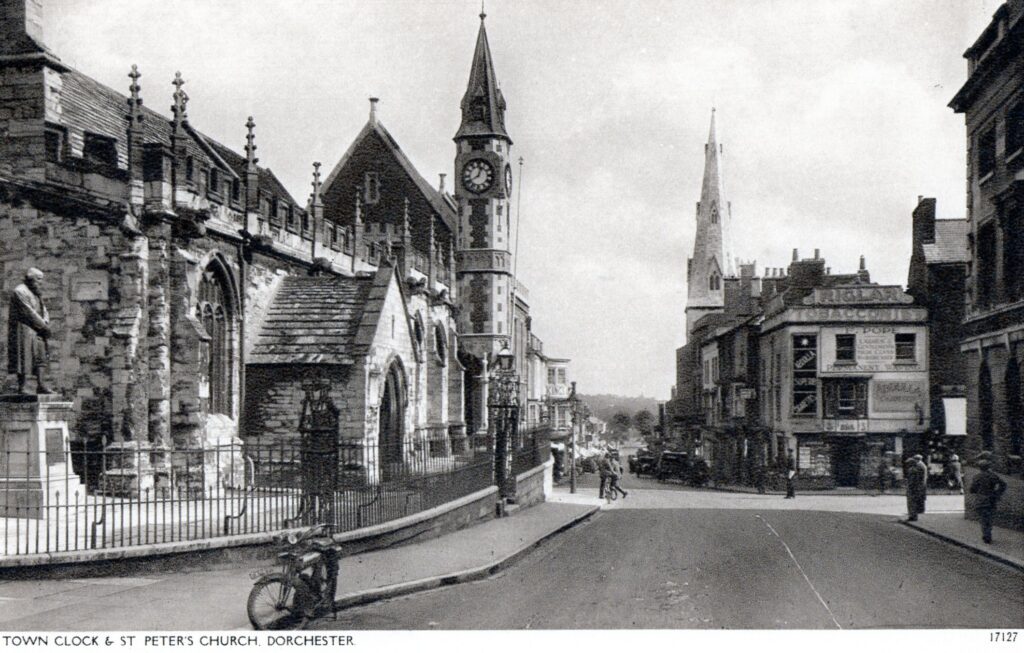
In the distance, the constable can be seen for the first time, wearing white lower arm coverings for visibility, no doubt for his protection as well after all the accidents and court cases involving this junction.
Most offenders at court tried to use the excuse that they did not realise a constable was on the junction and some proved it by colliding with him.
On 26th July 1922, Constable 122 Charlie STYLES was the officer at the Town Cross when he was knocked down when struck in the side by a motor car. He was taken to the Antelope Hotel, where he was found to be suffering from a slight sprain of the instep and shock. Afterwards he was taken to Police HQ by car. No doubt he was happy to be away from the location but his fellow officers would have been very concerned as he was the Force’s star footballer. The injury obviously was not long term as two years later he signed profession papers for Millwall football club and resigned from the Police Force.

In February 1932 at the Dorset Standing Joint Committee meeting it was discussed that traffic signals should replace policeman. The Committee reported that the Home Office had sent a circular to all police forces on the 8th October 1931 requesting that special consideration be given to change traffic control. As usual it was discussed in depth and in consultation with the Chief Constable they found out that only two points were being manned and the other was at the Jubilee Clock in Weymouth. The Chief recommended that officers were replaced by traffic signals and also other problem junctions. The other locations were: The Great Western Railway crossing at Dorchester and at Poole: Ashley Road, St Osmund’s Cross, Shah of Persia Cross and North Lodge Cross.
The sub committee recommended that the position be reported to the County Council to arrange for signals at the seven location, however before the motion was passed two members stated that the points at Poole were not very busy so just the Dorchester locations were requested.

You will notice that this is not the Town Cross junction but further up High West Street junction with Trinity Street.

At the DSJC meeting in May 1932 the subject was again reported on. They stated that a reply had been received from the County Council after it was looked into by the Road and Bridges Committee. They said the request had been deferred for 6 months on the ground that that the time was not opportune ( the cost of 200 pounds for the three local junctions) as the Courts had ruled that until the Minister for Transport had issued regulations approving standard signs the task could not be completed

In July 1933 the matter was again brought up at the DSJC meeting as there had been no progress and the matter was to be chased up but there is no record of the outcome.
In January 1935 PC Marsh was on point duty at the Town Cross when he beckoned to a motorist to pass him from High Street West on his right side but instead, he went left. The driver had apparently taken no notice of the Constable’s signal. As a result, PC Marsh had to move out of the way and the car made off, laughing at the constable after it had turned around.
OTHER PHOTOGRAPHS FROM AROUND THE COUNTY WHERE OFFICERS SEEM TO BE DOING POINT DUTY. Blandford below, but officer not known, but between 1907 and 1912.
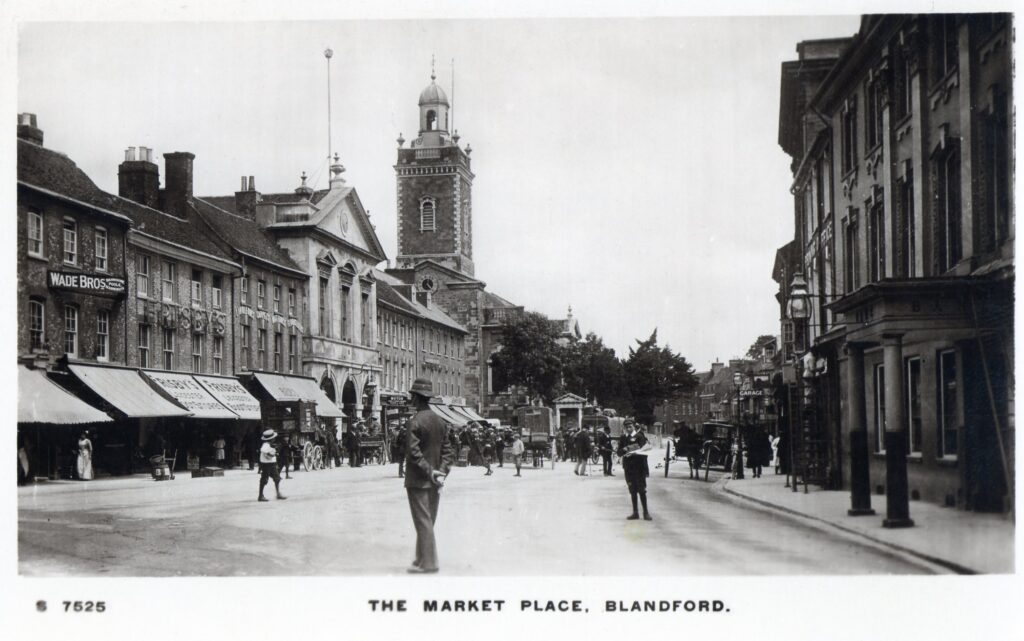
Branksome 27th May 1908, Sgt not known.

Wyke Regis, officer not known but poss 1920’s.

Bere Regis, officer not known but probably 1930’s
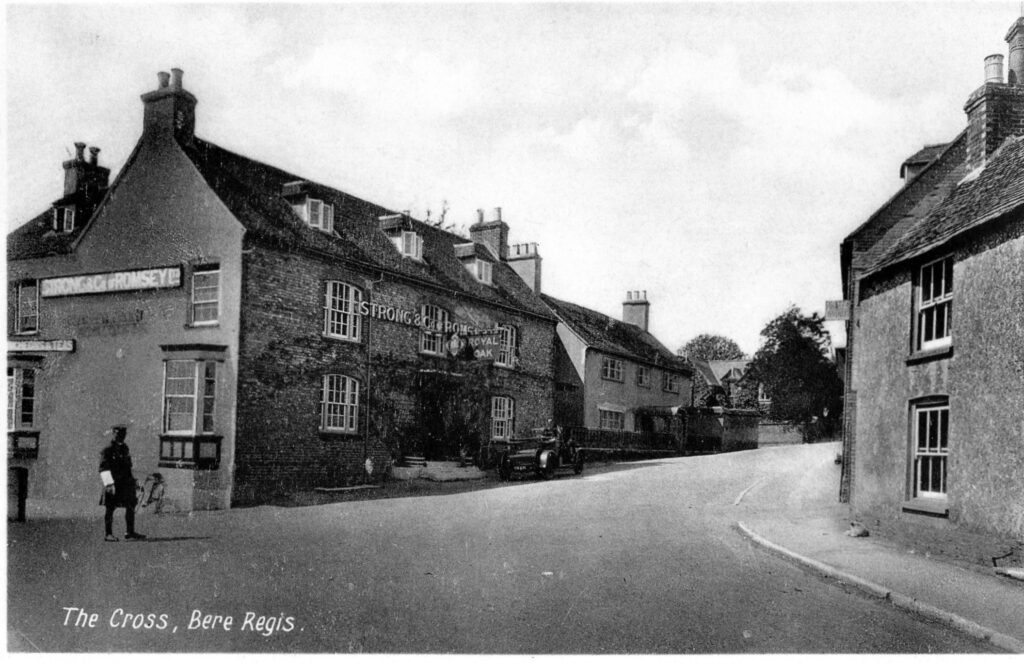
Dorchester again , officer not known, early 20th century.

Dorchester again, officers not known but summer 1908.

Poole in the 1930/40’s officer not known.
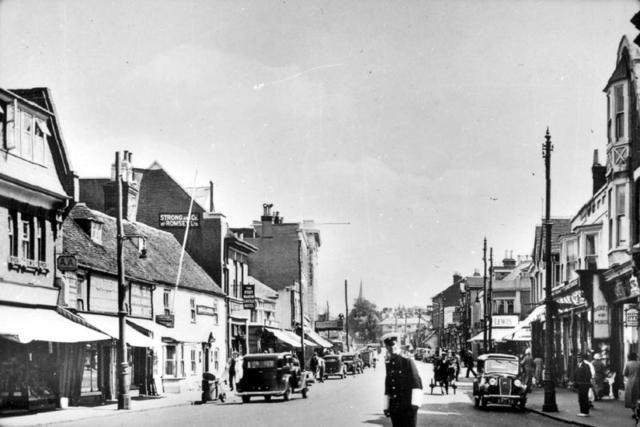
Sherborne, Cheap Street about 1950’s, officer not known.

Corfe Castle in the early 1930’s, showing PC 7 “Claude” BRUTON. Photo thanks to Cheryl ATKINSON.
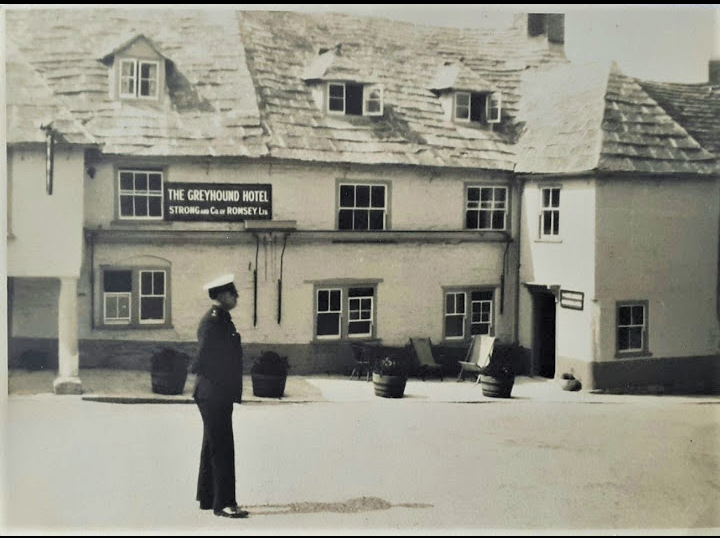
Early 20th century Swanage, officer not known.

Early 20th century at Portland, officer not known.

Poole, early 1940’s officer not known.
